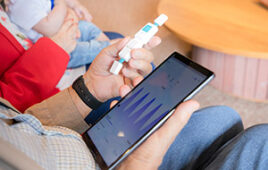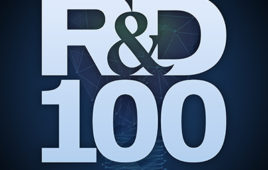Bio-Rad Laboratories, Inc., a multinational manufacturer and distributor of life science research and clinical diagnostic products, is collaborating with Layerlab of Sweden to enable researchers to study the binding kinetics of any transmembrane protein using surface plasmon resonance (SPR) technology. Using Layerlab’s novel methodology and easy-to-use chemistry kit, memLAYER, researchers can easily immobilize liposomes containing any transmembrane protein to Bio Rad’s ProteOn XPR36 protein interaction array system sensor chip surfaces for label-free high throughput kinetic analysis with high signal quality.
The novel array-based ProteOn XPR36 system offers researchers the ability to speed their drug discovery workflow due to its capability to simultaneously monitor 36 interactions. The combination of the ProteOn XPR36 system and memLAYER accelerates and enhances membrane protein research.
“The Layerlab kit overcomes low receptor density and promotes universal immobilization of liposomes and, when combined with the ProteOn XPR36 system, enables high-throughput SPR analysis of any membrane-bound protein,” said Laura Moriarty, Ph.D., Bio-Rad Product Manager.
Examining transmembrane proteins in liposomes, as opposed to isolated and bound to a sensor surface, enables researchers to mimic the cellular environment and preserve protein functionality. Immobilizing and capturing liposomes directly to the biosensor surface, however, can be challenging. Some liposomes bind weakly with SPR biosensors. Analyzing the captured liposomes can be difficult since liposomes contain fewer proteins than a standard sensor surface, reducing signal quality.
The memLAYER tag is spontaneously incorporated into any liposome membrane, including those of synthetic lipoparticles available through Bio-Rad’s collaboration with Integral Molecular, fractionated cell membranes, and cellular lipid vesicles like microsomes and endosomes. This allows for kinetic analysis of transmembrane proteins in liposomes that cannot be immobilized by standard techniques such as through Biotin-NeutrAvidin derivitization.
Layerlab’s lipid bilayer immobilization method allows researchers to achieve previously impossible densities of membrane-bound receptor molecules. Additional liposome-incorporated tags can link to other tagged liposomes, creating multiple layers of lipoparticles above the sensor surface. These layers boost the density of receptor proteins and increase data quality.
Layerlab’s immobilization method allows for continual regeneration of biosensor surfaces, thus extending the lifetime and utility of Bio-Rad sensor chips. The biosensor surface can be regenerated with readily available deionized water, which breaks apart the hybridized memLAYER tag pairs and washes away the previously attached liposomes.
Using Layerlab’s memLAYER chemistry kit requires little hands on time. Incorporation of the memLAYER tag to any liposome in the laboratory requires a 15-minute incubation at room temperature. Immobilization of the liposomes to the ProteOn XPR36 sensor surface requires 10 to 20 minutes.
Date: April 6, 2010
Source: Bio-Rad Laboratories, Inc.




